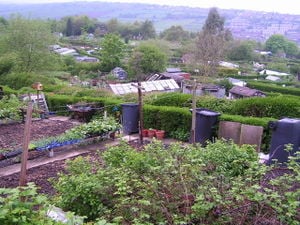
 Manningtree: The tiny town that dreams of saving the planet, BBC News (Apr 10, 2022)
Manningtree: The tiny town that dreams of saving the planet, BBC News (Apr 10, 2022)
Essex ( ESS-iks) is a ceremonial county in the East of England, and one of the home counties. It is bordered by Cambridgeshire and Suffolk to the north, the North Sea to the east, Kent across the Thames Estuary to the south, Greater London to the south-west, and Hertfordshire to the west. The largest settlement is Southend-on-Sea, and the county town is Chelmsford.
Networks and sustainability initiatives[edit | edit source]
- PACE Manningtree, local community group exploring and carrying out activities in the wider Manningtree area to help address the climate crisis and support our environment. "We want to increase understanding and take positive steps to protect our local environment. We want to help people and businesses in our community to reduce their carbon footprint." added 09:09, 11 April 2022 (UTC)
- Alternative Estuary, promoting positive alternatives along the Thames Estuary, a number of community groups and projects listed both in Essex and Kent, added 13:10, 6 April 2021 (UTC)
- Southend in Transition
- Transition Chelmsford
- Transition Wivenhoe
Climate action[edit | edit source]
Biodiversity[edit | edit source]
The Essex Wildlife Trust (EWT) is one of 46 wildlife trusts which cover the United Kingdom. The EWT was founded in 1959, and it describes itself as Essex's leading conservation charity, which aims to protect wildlife for the future and the people of the county. As of January 2017, it has over 34,000 members and runs 87 nature reserves, 2 nature parks and 11 visitor centres.
Essex has one of the longest coastlines of any English county, with saltmarshes, lagoons, mudflats, grazing marshes, reedbeds and shingle. Its ancient forests were formerly important to the local economy, with wood being used for fuel, construction and bark in the tanning industry. Coppicing is being re-introduced by the EWT to encourage woodland grasses, flowers, invertebrates and birds. A few grasslands on the heavy clays of south- and mid-Essex are still grazed according to traditional methods, supporting a mixture of pasture and fen. Some brownfield sites, often on contaminated soil, have populations of nationally scarce species, particularly invertebrates.
Wallasea Wetlands is a reclaimed wetlands area located in Essex, England. It has been created as part of a government-funded wetlands scheme to halt the decline of wild and endangered birds caused by the drainage and development of former wetland sites. It is the largest man-made marine wetland area in the United Kingdom.
The wetland spans an area of 115 hectares (1.15 km2) and is sited on Wallasea Island, which borders two rivers (River Crouch to the north and River Roach to the south-east). They provide winter grounds for wading birds, as well as breeding and nursery areas for aquatic wildlife, such as bass, mullet, flatfish and herring and even some types of dolphin. The area will also help to reduce the flooding of properties near the River Crouch by providing a run-off area for floodwaters.
In the process being termed "managed re-alignment", the seawall that protects croplands and property was re-established in more tenable positions, three miles behind the new wetlands, which will provide habitat for birds like oystercatchers, avocets and little terns, according to the press release issued at the time.
Walkers and birdwatchers will be able to enjoy the scenery by means of a new footpath that has been built on the top of this new relocated sea wall. Construction was completed in 2006 and by 2011 the land had evolved into wetland, mudflats, saline lagoons and seven artificial islands, allowing the wildlife to reside on these areas.
An extension to the scheme, using 2,400 shiploads of spoil excavated from London's Crossrail tunnels, was completed in July 2015, when an additional area of land was opened to tidal flow. This has formed the Jubilee Marsh (160 ha / 400 acres). The whole project is expected to be completed by 2025.
Trees, woodland and forest[edit | edit source]
The Big Green Internet project[edit | edit source]
- The Big Green Internet project, working with farmers and land owners
to plant wildlife corridors and hedgerows to connect our woodlands.added 10:48, 11 December 2021 (UTC)
Thames Chase community forest[edit | edit source]
The Thames Chase Community Forest is a community forest of 9842 hectares (24,320 acres/38 square miles) located in 47 sites in London and Essex, England. Established in 1990, the community forest is administered by the Thames Chase Trust, with a stated aim "to renew and regenerate the landscape at the edge of East London and South Essex by creating a varied wooded landscape for local people to influence, create, use, enjoy and cherish".
The Thames Chase Forest Centre is located near Upminster. Forestry England manage the 56 hectares (140 acres) of new woodlands, meadows and ponds at the site for the benefit of people, nature and the climate.
Cycling activism[edit | edit source]
The cake escape, project to encourage Essex residents to experience the best of local café culture, combined with a little exercise and exploration of the countryside.
Food activism[edit | edit source]
South East Essex Organic Gardeners
Sustainable transport activism[edit | edit source]
Walking: Wikipedia: Footpaths in Essex (category)
Waterways: Wikipedia: Canals in Essex (category)
Resources[edit | edit source]
Past events[edit | edit source]
2016
February 27 SE Essex Seed Potato Day
News and comment[edit | edit source]
2015
The soup method, March 18[1]
Campaigns[edit | edit source]
External links[edit | edit source]
Wikipedia: Essex


